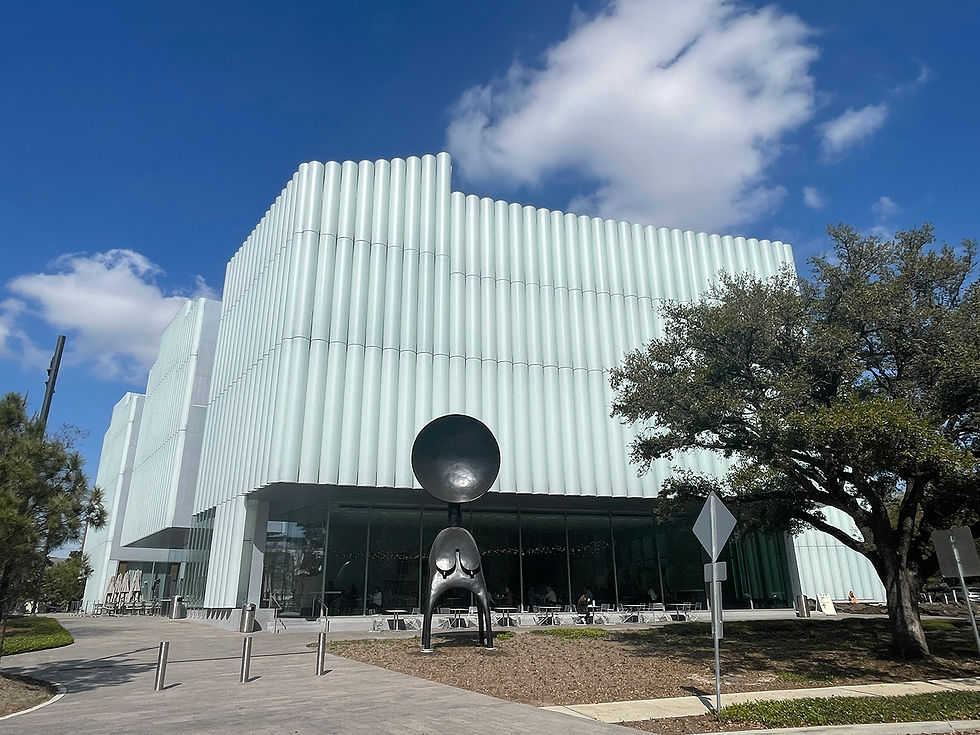Maiden and Matron: Simone Leigh in Texas (572 words)
- Rainey Knudson
- Apr 11, 2024
- 3 min read
Updated: Apr 12, 2024

What is more beautiful, womanhood based in the future, or one that reflects the past?
In recent years, two monumental outdoor statues by Simone Leigh have appeared in Texas, both with a signature spoon-like head: Sentinel IV (2020) at UT Austin in the Landmarks public art collection, and Satellite (2022) at the Museum of Fine Arts, Houston.
Both are bronze figures of women, their distinctive heads modeled after Zulu ceremonial spoons. I wrote about the statue at UT in a larger essay for a forthcoming book on the Landmarks collection:
"Simone Leigh’s Sentinel IV is sited in a quieter courtyard that reinforces the implicit, regal dignity of the statue. Enclosed on three sides by the beautiful old architecture of the former women’s gymnasium, Leigh’s elongated feminine form with an abstracted, disk-like head stands guard, as her name suggests. As with all great art, Sentinel IV involves a surprise: a familiar trope (statue of a naked female) with a startling twist (spoon head). She is a beacon, a siren, and a receptacle, too. Like a radio dish, the curved shape of the head suggests both collection and transmission, porously flowing back and forth with whatever signals are out there."
The spoon also of course references eating and nourishment, which leads me to the ways Leigh’s two figures are starkly different. The UT statue is a slender spire, a maidenly form with the gravity-defying breasts of a young woman who has never nursed a baby. She stands sentinel in her lovely, sheltered courtyard—notably the courtyard of the former women's gym at UT, the gym of the maidens—and she radiates and receives all our fantasies of youthful, feminine, virginal beauty. She is an African Aphrodite, rising ex nihilo, a totem of powerful, blossoming femininity in the future tense. She is potential.
By contrast, Satellite, the figure at the MFAH, carries with her the weight of the species’ history, the evidence of its ongoing project of continuation. Sited on a busy public street in front of the museum, unenclosed—exposed actually—she is a solid, squat figure, her spoon head massive relative to her body. She is firmly planted on four legs, offering shade and protection beneath. We can stand under her pelvis, take refuge under the mother, under the place from whence we all come. Her extremely distinctive breasts are low and flattened against her chest, an upside-down heart-shaped badge of all the humanity she has nursed into being.
Put another way, if the UT statue could never hold a pencil under her breasts, the MFAH one could hold a box of them. It’s crass, this old test for the elasticity and resilience of breasts. Only the most craven plastic surgeons include it on their websites. But I can’t help to think of the uproar that would have ensued if the flattened older breasts in Satellite had appeared in front of the MFAH once upon a time, in my own youth.
I love how Leigh’s two statues illustrate different phases of women, and how Satellite in particular is an invitation to question the myth of Forever Young Forever Beautiful. We need both forms of femininity: the aspirational, worshipful totem in her secluded privacy, and the sheltering mother out in the world, protecting us from all its troubles. We need the future feminine to continue being born. We need the past feminine to remind us where we come from, and how we change.





